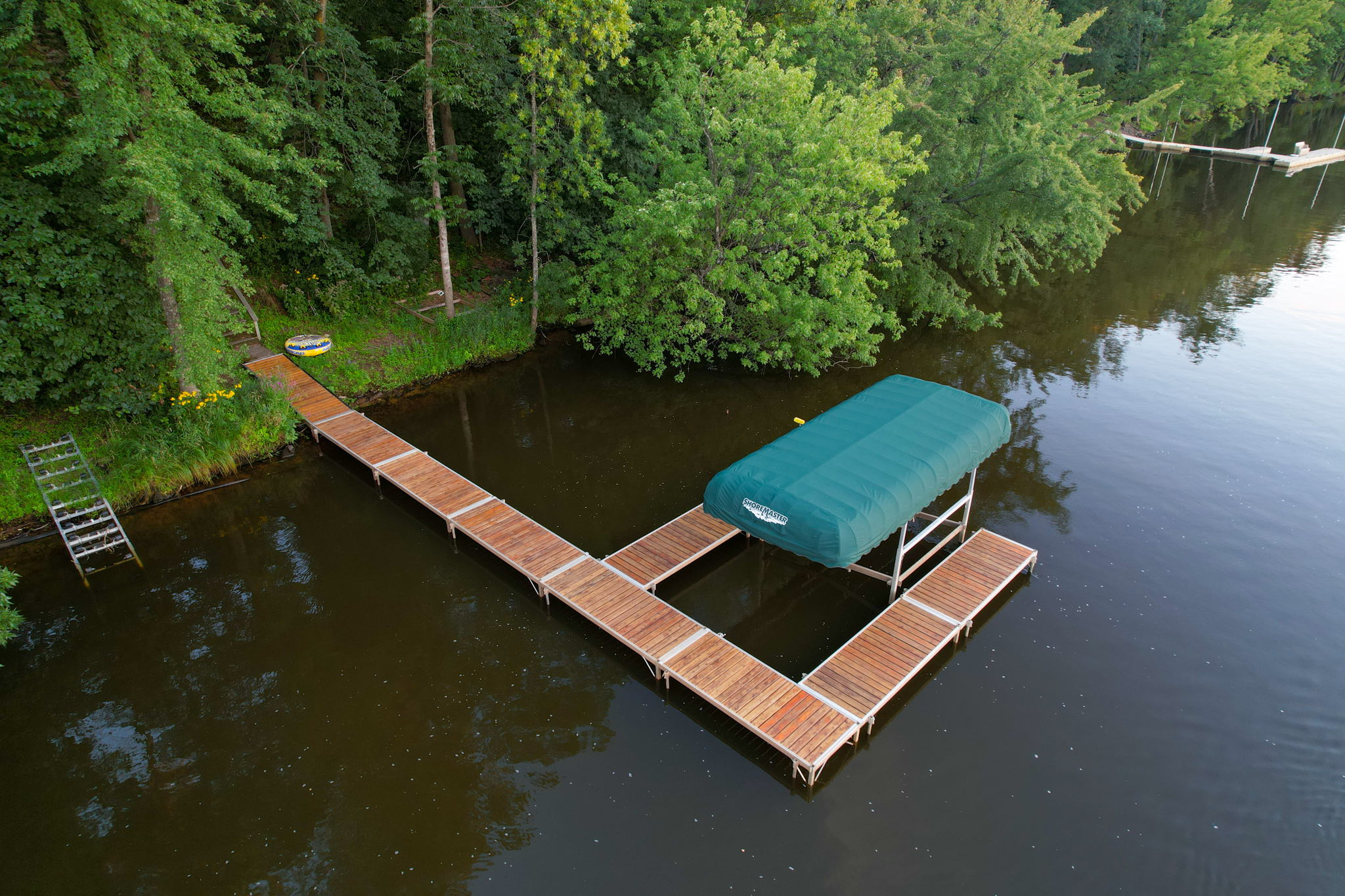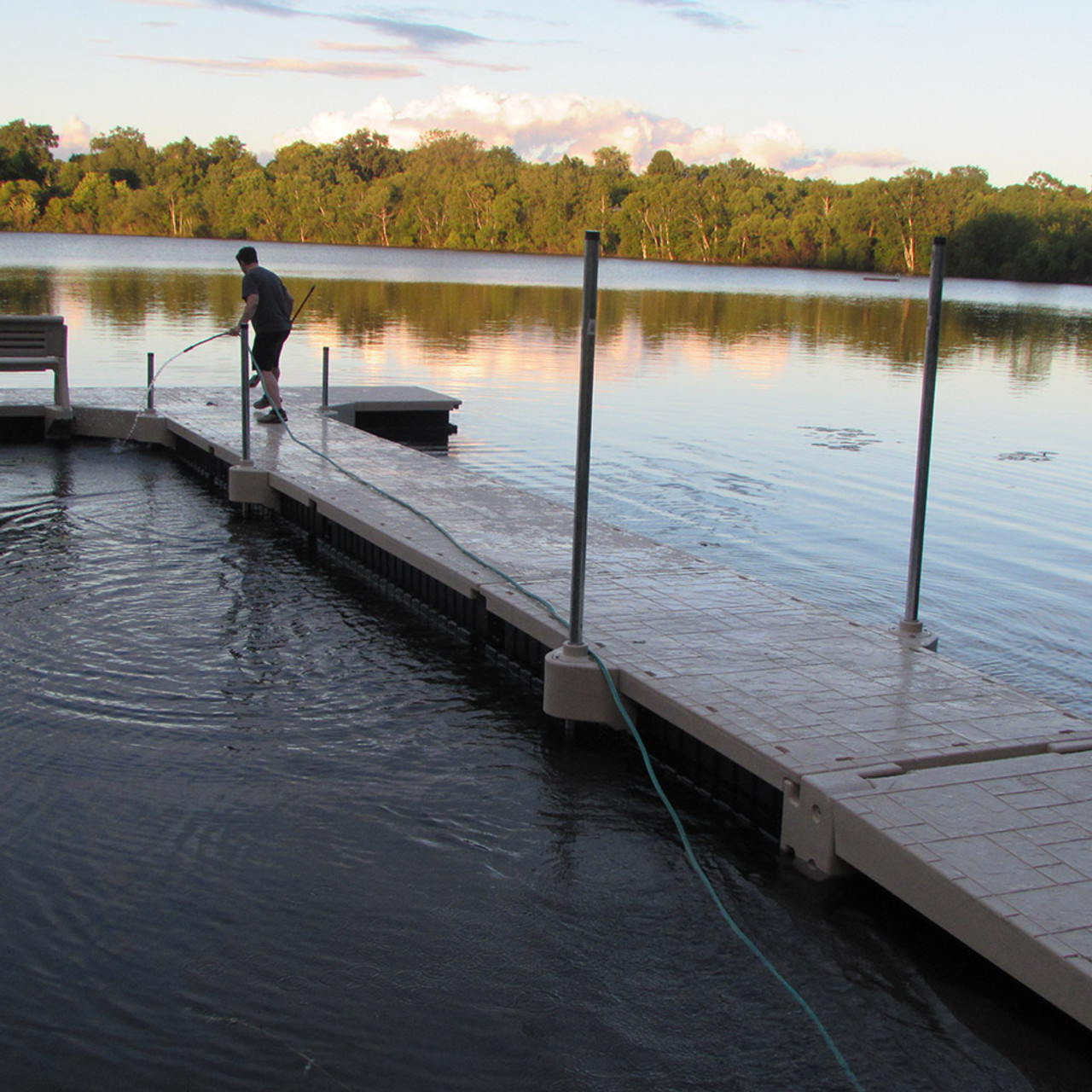Ingenious Floating Docks: The Future of Beachfront Access and Recreation
Ingenious Floating Docks: The Future of Beachfront Access and Recreation
Blog Article
Upgrade Your Waterfront With Long Lasting Floating Docks
Upgrading your waterfront with long lasting floating docks can substantially enhance both capability and appearances, offering a flexible solution for various water activities. These frameworks are made to adjust to fluctuating water levels, ensuring safety and security and access throughout the seasons. With a range of products available, including low-maintenance choices and conventional timber, selecting the appropriate dock can complement your individual style and fulfill functional needs. However, recognizing the nuances of installment and maintenance is important for ensuring long life and performance. What factors should you take into consideration when making this investment?
Benefits of Floating Docks
Floating docks offer a wide range of benefits that improve their allure for various maritime applications. Among the main benefits is their versatility to transforming water degrees - floating dock services. Unlike traditional fixed docks, floating docks increase and fall with the trend, guaranteeing regular accessibility for boats and boat no matter environmental problems. This function considerably reduces the danger of damages to vessels, as they continue to be safely tied also throughout changes in water depth.
Additionally, floating docks are easier to relocate and mount, providing flexibility for seasonal or short-lived usage. Their modular layout permits modification to fit specific needs, whether for exclusive marinas, property beachfronts, or commercial applications.
Additionally, floating docks produce very little disruption to the water environment, protecting neighborhood ecological communities and minimizing the likelihood of disintegration. They additionally offer boosted safety and stability for individuals, as their resilient nature offers a more flexible surface area than rigid structures.
In addition, floating docks can promote a diverse variety of tasks, such as angling, swimming, and recreational boating, making them a useful asset for waterside growth. Their convenience and functionality make floating docks a favored selection for a range of maritime tasks.
Choosing the Right Products
Picking suitable materials for floating docks is important to their durability, efficiency, and general effectiveness. When choosing materials, consider elements such as ecological exposure, upkeep needs, and architectural stability. Typical products consist of timber, plastic, light weight aluminum, and composite options, each offering unique advantages and negative aspects.
Wood, while visually pleasing, needs normal maintenance to stop rot and degeneration. Pressure-treated timber can improve durability, yet it might still catch water damages over time. Plastic floats, commonly made from high-density polyethylene, are immune to rust and need very little maintenance, making them an eye-catching option for low-maintenance applications.
Light weight aluminum is one more viable option, recognized for its toughness and light-weight buildings. It is immune to rust and can withstand harsh weather condition conditions, although it may be more expensive than various other products. Composite materials integrate the very best qualities of wood and plastic, providing a durable and low-maintenance alternative that imitates the look of timber without the linked downsides.
Eventually, the choice of material must line up with the intended usage, ecological considerations, and budget restraints, making sure a sturdy and practical floating dock that satisfies your specific demands.
Setup Process Review
The effective setup of a floating dock relies on mindful preparation and execution, guaranteeing that it operates properly in its designated atmosphere. The primary step involves analyzing website conditions, consisting of water depth, coastline features, and prevailing weather condition patterns, which will educate the dock design Read More Here and anchoring system.
Complying with the site evaluation, the following stage is to prepare the floating dock parts. This includes setting up the structure, securing drifts, and affixing any essential hardware. It is essential to ensure that all links are waterproof and robust to stand up to aquatic problems.
As soon as the dock is assembled, the installation process commences with positioning the dock in the water. This can include a crane or other lifting devices, particularly for bigger frameworks. Appropriate placement is essential for functionality and security.

Upkeep Tips for Durability
Regular upkeep is important for making certain the durability and optimum performance of a drifting dock. To achieve this, start with regular assessments at least twice a year, concentrating on the stability of the dock's framework, including the flotation protection devices and linking equipment. Search for indicators of damages, wear, or rust, and deal with any kind of issues immediately to avoid additional damage.
Cleaning is one more essential aspect of upkeep. Get rid of debris, algae, and barnacles from the dock's surface to stop unsafe conditions and maintain visual allure. Use a moderate cleaning agent and a soft brush to prevent harming the dock's products.
Additionally, make sure that the dock is properly anchored and protected to hold up against seasonal modifications in water levels and weather. Check the anchoring system for stability and make modifications as needed.
Enhancing Your Outdoor Visual
To develop a visually enticing outdoor area, including a floating dock can dramatically improve the general visual of your waterside property. Floating docks are not only practical yet can also act as a striking prime focus that enhances the natural surroundings - floating docks. Offered in various materials and styles, these docks can be tailored to match your building's building design and landscape
The enhancement of decorative aspects, such as integrated lighting or elegant barriers, even more raises the dock's visual allure. Consider using natural wood finishes, which mix flawlessly with the setting, or choosing contemporary materials like aluminum or composite decking that offer a smooth, modern appearance.
Strategically positioning planters or seating areas on or around the dock can produce inviting spaces that encourage relaxation and pleasure of waterfront views. Additionally, including try this out shades and structures that integrate with your landscape will create a cohesive aesthetic throughout your outdoor location.

Final Thought

Updating your waterfront with long lasting floating docks can dramatically enhance both performance and visual appeals, giving a versatile service for numerous water activities. Unlike standard set docks, floating docks rise and autumn with the trend, making certain consistent access for watercrafts and watercraft no matter of environmental conditions.Choosing ideal materials for floating docks is crucial to their longevity, performance, and general efficiency.As soon as the dock is assembled, the installment process commences with positioning the dock in the water.In summary, floating docks offer various benefits, consisting of flexibility to water degree adjustments and a variety of material options.
Report this page